Moscow Unveiled on a Journey Through Its Rich History and Vibrant Urban Life
Moscow Unveiled on a Journey Through Its Rich History and Vibrant Urban Life
For about five years, I had the opportunity to travel frequently to Moscow, and those memories remain deeply cherished. The city made a lasting impression on me, not just because of its dynamic development but also due to the incredible team I had the pleasure of working with. I sincerely miss the camaraderie and collaborative spirit we shared.
My last visit to Moscow was before the outbreak of the war, during a time when the city was a vibrant and bustling hub. Both the downtown area and its outskirts were experiencing a remarkable surge in development, reflecting Moscow's rapid expansion and modern aspirations. During that period, I had the privilege of working on several significant projects in Russia. One residential development, in particular, stood out prominently and was recognized as one of the finest in Moscow, earning numerous prestigious awards for its excellence. Another noteworthy project I was involved in highlighted modern architectural trends and was prominently featured at an international exhibition in Venice Biennale, Italy.
Navigating Moscow’s Airports
Moscow is served by two primary airports: Sheremetyevo and Domodedovo. Sheremetyevo is noted for its English-speaking staff and customs services, whereas Domodedovo primarily operates in Russian. While both airports are well-regarded, I found Sheremetyevo to be more convenient due to its extensive English services.
Language can be a barrier in Russia, as many locals do not speak English. During my visits, I often relied on my Russian colleagues or used a translation app on my iPhone to communicate. Despite the language differences, I always found Russians to be incredibly warm and welcoming, guiding me with kindness even when we couldn’t converse fluently.
Moscow's Dynamic Transformation
Moscow was undergoing a remarkable transformation, skillfully blending its historical charm with modern innovation. The city was actively revitalizing its historic neighborhoods while simultaneously introducing striking modern architecture that reshaped its skyline. Key projects, such as the construction of iconic high-rises in the Moscow City complex, exemplified this fusion of old and new. The expansion of transport infrastructure, including new metro lines and tram routes, improved connectivity and alleviated congestion. Additionally, Moscow embraced green initiatives, with the development of new parks and the adoption of sustainable building practices reflecting a strong commitment to environmental sustainability. This dynamic development was positioning Moscow as a global cultural and economic hub, poised to meet future demands while celebrating its rich heritage.
From Stalinist Grandeur to Modernist Influences
Buildings in Moscow are equipped with heavy-duty radiators, ensuring that interiors remain comfortably warm despite the cold weather. While Moscow is known for its chilly winters, they are not as harsh as those in Siberia. In fact, I found that winter in Chicago felt even colder.
Moscow's architectural landscape is a rich tapestry woven from its historical grandeur and modern innovation. The city's skyline prominently features the massive, monumental style that characterized the Soviet era, particularly under Stalin's rule. This style, known as Stalinist architecture, is marked by its grandiose scale and lavish ornamentation, with iconic buildings like the Seven Sisters and Moscow State University embodying the strength and stability of the Soviet regime. In contrast, the mid-20th century also saw the influence of Le Corbusier, a pioneer of modern architecture. His principles of functionalism and Brutalism introduced new perspectives to Soviet architecture, emphasizing efficiency and the raw beauty of materials like concrete. Today, Moscow's architecture is a dynamic blend of these historical influences and contemporary trends. The city’s landscape showcases a fusion of Soviet-era monumentality with modernist ideals, reflecting Moscow’s ongoing evolution as a city that bridges its rich past with a forward-looking future.
Moscow's Community-Centric Urban Fabric
Moscow’s architectural and urban landscape is not only a testament to its historical and modern evolution but also reflects a deep-rooted community orientation. In the city, traditional values of community support remain strong, with grandmothers often taking on the role of caregivers, and neighbors vigilantly looking out for one another. This sense of communal responsibility contributes to a natural security that enhances the quality of life in Moscow’s neighborhoods.
Moreover, Moscow’s urban planning emphasizes accessibility and convenience, particularly in residential areas. Each neighborhood is meticulously designed to ensure that essential amenities, such as kindergartens and schools, are within close proximity. This school-centric approach underscores the city’s commitment to providing families with convenient access to education, thereby fostering a supportive and well-connected community environment. As Moscow continues to grow and modernize, its dedication to maintaining these community-oriented values ensures that the city remains both a vibrant and nurturing place to live.
Enchanting Night Illuminations in Moscow
A distinctive feature of Moscow’s urban design is the prevalence of podium levels in buildings, especially in residential and mixed-use developments. These podiums serve as vibrant hubs for commercial activity, hosting a variety of amenities such as retail stores, cafes, and restaurants. This blend of residential and commercial spaces not only adds convenience for residents but also creates lively streetscapes that contribute to the city’s dynamic atmosphere.
Moscow truly comes alive at night, particularly during the winter months. The city is renowned for its stunning light displays, where buildings, streets, and even residential complexes are adorned with elaborate illuminations. These lights transform the cityscape into a dazzling spectacle, with intricate designs and vibrant colors that bring warmth and charm to the cold, dark evenings. Whether it’s the elegant glow of historic facades or the festive lights draped across modern structures, Moscow’s nighttime illumination adds a magical touch, making the city feel alive and inviting even in the depths of winter.
Experiencing Moscow’s Seasons
Moscow’s diverse seasons add another layer to its character. While foreigners often simplify the city’s climate into just two seasons—a very short summer and a long winter—locals describe winter as having distinct phases. Summer days are long, with daylight extending until 10 p.m., while winters are marked by their darkness and frequent snowfall. The snow in Russia sparkles like diamonds, creating a breathtaking contrast to the snow I’ve encountered in Kyoto, Chicago, or Seoul. It almost feels like stars have descended to the ground. Despite the cold, winter in Moscow is lively with festivals, and it’s not uncommon to see people enjoying ice cream inside shopping malls, presenting a cheerful juxtaposition to the chill outside.
Summers in Moscow are vibrant, with numerous festivals, outdoor music performances, and movie shoots often taking place near the Bolshoi Ballet Theatre. You might even catch actors and actresses performing live. One of my favorite spots was a renowned toy store where I bought Christmas ornaments. Each year, my family decorates our small artificial tree with ornaments from different countries, and the Russian ornaments added a special touch to our holiday traditions.
Exploring Red Square and Its Surroundings
Moscow is renowned not only for the world-famous Bolshoi Ballet but also for its rich cultural heritage, epitomized by landmarks such as the Bolshoi Theatre and the Pushkin State Museum of Fine Arts.
The Bolshoi Theatre is one of the world's most iconic performing arts venues, celebrated for its grand neoclassical architecture and outstanding productions of ballet and opera. Established in 1776, the Bolshoi has a long and illustrious history, making it a symbol of Russian cultural excellence. Its magnificent main hall, adorned with ornate chandeliers, velvet seats, and a rich red and gold interior, provides a breathtaking setting for performances. The Bolshoi is not just a theatre but an institution that has shaped the world of ballet, introducing legendary dancers and choreographers who have defined the art form. Attending a performance here is more than just a night at the theatre; it's an immersion into the rich tradition of Russian performing arts.
The Pushkin State Museum of Fine Arts is one of Moscow’s premier art institutions, renowned for its impressive collection of European art. It houses works spanning centuries, including masterpieces by Rembrandt, Van Gogh, Monet, and other great artists. The museum’s diverse collection also includes ancient artifacts, classical sculptures, and archaeological finds that provide insight into various world cultures. Established in 1912, the Pushkin Museum has grown into a vast complex, with exhibitions ranging from antiquity to contemporary art. Its curated displays offer a journey through art history, presenting visitors with the opportunity to view some of the world’s most celebrated works up close. Despite many exhibits frequently traveling internationally, the museum remains a must-visit destination for art lovers, offering a rich and immersive cultural experience.
Red Square is a must-visit landmark, offering a glimpse into Moscow's rich history and architectural grandeur. As the heart of the city, it is surrounded by several iconic sites. To the west stands the Kremlin, a historic fortress complex housing the President's official residence and notable buildings such as the Armoury Chamber and the Grand Kremlin Palace. At the southern end of the square, Saint Basil's Cathedral dazzles with its vibrant onion-shaped domes and intricate design, symbolizing Russia’s cultural and religious heritage. Nearby, Lenin’s Mausoleum provides a poignant reminder of Soviet history, while the State Historical Museum on the northern side offers a comprehensive look at Russian history.
On the eastern side of Red Square, GUM (Glavny Universalny Magazin), often referred to as the “first store,” stands as a historic department store renowned for its stunning architecture and luxury shopping. Originally opened in 1893, GUM has been a premier shopping destination for over a century. Known for its striking glass roof and ornate design, GUM blends historic charm with modern conveniences, offering a wide range of high-end goods.
Alongside GUM, the historic Yeliseyevsky Food Emporium, affectionately called the “second store,” also holds a special place in my heart. This iconic food hall, housed in a grand palace, was a favorite spot for grocery shopping until it closed its doors after 120 years during the COVID-19 pandemic. I always enjoyed bringing back unique items from Yeliseyevsky for my family in Japan, making it a cherished part of my Moscow visits.
Zaryadye Park is a remarkable addition to Moscow’s urban landscape, merging modern design with natural beauty. Located near the Kremlin and Red Square, this 10-hectare park features diverse landscapes, including an ice cave, a floating bridge, and lush green spaces. Designed to showcase Russia's natural environments, Zaryadye Park provides a multifunctional public space for recreation, culture, and leisure. It includes thematic zones like the “Phytomir,” a greenhouse with various plants, and the “Moscow River Embankment,” which offers stunning city views. Zaryadye Park is not just a green oasis in the heart of Moscow but also a symbol of contemporary urban renewal, integrating cutting-edge design with ecological principles.
Tverskoy Boulevard is one of Moscow's prominent and historic streets, with Tverskoy Boulevard Park nestled amidst it. This charming green space offers a refreshing respite from the urban hustle. Known for its well-maintained gardens, pedestrian pathways, and classic Moscow ambiance, the park also hosts various festivals and cultural events throughout the year. From art fairs and music performances to seasonal celebrations and food markets, the park becomes a vibrant hub of activity, attracting both locals and tourists. Its central location and blend of green space with urban vibrancy make Tverskoy Boulevard Park a cherished spot for relaxation and entertainment in the heart of the city.
Cultural and Culinary Delights
Among the famous old restaurants along Tverskoy Boulevard is "Café Pushkin," renowned for its historical style and bakery. Established in 1999, Café Pushkin offers a classic Russian dining experience with elegant interiors reflecting 19th-century Russian aristocracy. Known for its high-quality cuisine and traditional Russian pastries and desserts, the café has become a landmark in Moscow, attracting both locals and tourists with its charming atmosphere and delicious food.
Russian cuisine is as diverse as it is delicious, complemented by impressive wine collections available in many restaurants. One memorable dining experience was at a Georgian restaurant, where traditional songs were performed live, paired with excellent Georgian wine.
In Russia, you can also find delicacies like caviar and ikura. Caviar is a luxurious staple, prized for its rich, briny flavor. Ikura refers specifically to salmon roe and is highly regarded in both Russian and Japanese cuisines, where it shares the same name.
Honey is another popular ingredient in Russia, with a wide variety of types and flavors available. Russian honey comes in many different varieties, and flavored honeys offer unique tastes ranging from herbal to fruity. Fusion cuisine has also become increasingly popular in Russia, blending elements from various culinary traditions to create unique and delicious flavors enjoyed by food enthusiasts.
No one can resist locally made Russian chocolate—it tasted just as good as Belgian chocolate, but even better! I received a chocolate gift box from one of my clients, and it looked like a set of rusty tools! It was surprisingly heavy, like a solid block of chocolate, and it took our family quite some time to finish it. As we ate, it literally felt like we were chewing on actual tools, but the taste was so good that we couldn’t stop laughing and enjoying it.
Luxurious Hospitality in Moscow
Moscow also boasts several luxury hotels, including The Ritz-Carlton, known for its breathtaking views of Red Square from its terrace and exceptional dining options, and the Metropol Hotel Moscow.
The Metropol Hotel, a historic and classic establishment, has been a significant part of Moscow's hospitality scene since its opening in 1905. Located just off Red Square, it features elegant architecture and luxurious interiors, including a grand atrium where guests can enjoy buffet breakfasts accompanied by live harp music. Renowned for its historical significance and opulent ambiance, the Metropol Hotel has hosted many distinguished guests over the years. The rich hot chocolate served at both The Ritz-Carlton and the Metropol Hotel is exceptional, adding to the luxurious experience.
Exploring Moscow by River Bike
Moscow also offers a unique and scenic way to explore the city with a river bike ride. The city's extensive riverfront paths provide an excellent opportunity to experience Moscow also offers a unique and scenic way to explore the city with a river bike ride. The city's extensive riverfront paths provide an excellent opportunity to experience Moscow from a different perspective. As you pedal along the Moscow River, you’ll be treated to stunning views of iconic landmarks, lush green parks, and modern architectural marvels. One of the highlights of a river bike ride is the chance to see Moscow’s historic sites and natural beauty in a leisurely, relaxed manner. You can ride past the majestic Kremlin, the elegant Cathedral of Christ the Savior, and the charming Gorky Park, all while enjoying the serene waters of the river. The well-maintained bike paths ensure a smooth ride, and there are plenty of spots to stop and take in the view or snap some memorable photos. Whether you're a local or a visitor, a river bike ride in Moscow is a refreshing and delightful way to explore the city’s vibrant urban landscape.
Moscow is becoming increasingly bike-friendly, with the city undergoing extensive street upgrades, including the addition of dedicated bike lanes with safety features. The VeloBike rental system is available throughout the city, making it easy for residents and visitors to explore Moscow on two wheels. The dedicated bike lanes are designed with safety in mind, featuring barriers and clear signage to protect cyclists from traffic, ensuring a secure and enjoyable riding experience. Whether you're commuting, sightseeing, or just enjoying a leisurely ride, the VeloBike system offers a convenient and eco-friendly way to navigate the city.
Moscow's Ever-Evolving Tapestry
Moscow is a city of contrasts, where history and modernity coexist in a vibrant, ever-evolving tapestry. From the imposing Stalinist skyscrapers that define the city's mid-20th-century architectural ambitions to the sleek, glass-clad high-rises that symbolize its contemporary aspirations, Moscow’s skyline narrates a story of transformation and resilience. The influences of Le Corbusier’s modernist principles are evident in the city’s embrace of functional design and innovative structures, while the grandeur of the Soviet era remains an indelible part of its identity.
Moscow stands as a dynamic blend of old and new, where iconic landmarks like Red Square and the Kremlin coexist with modern developments and green initiatives such as Zaryadye Park. This fusion of historical grandeur and contemporary innovation reflects the city's commitment to preserving its rich heritage while embracing forward-thinking design. As Moscow continues to evolve, it remains a captivating destination, offering a unique perspective on the architectural transformation of one of the world’s most iconic cities. After the war is over, I look forward to visiting and experiencing firsthand the vibrant mix of tradition and modernity that defines this remarkable city.







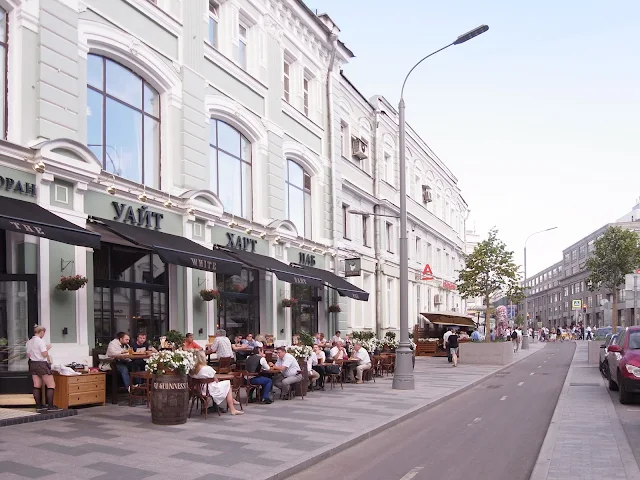






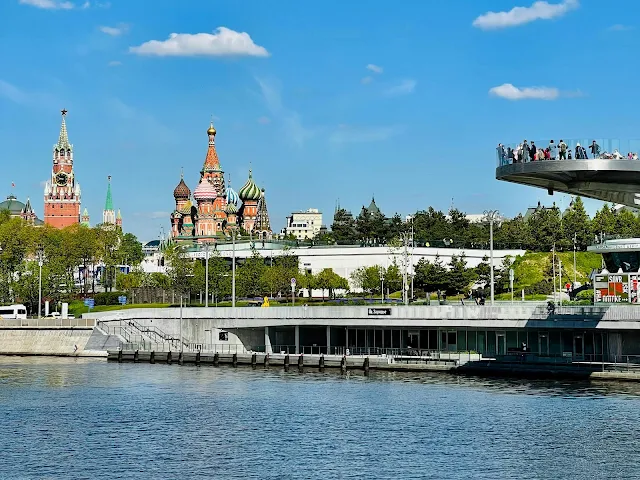

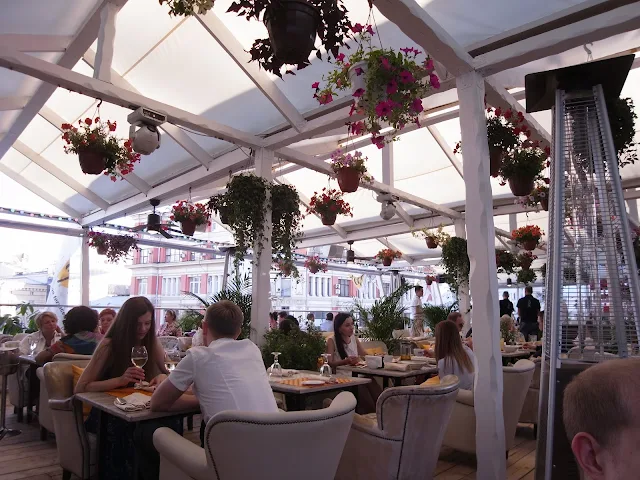
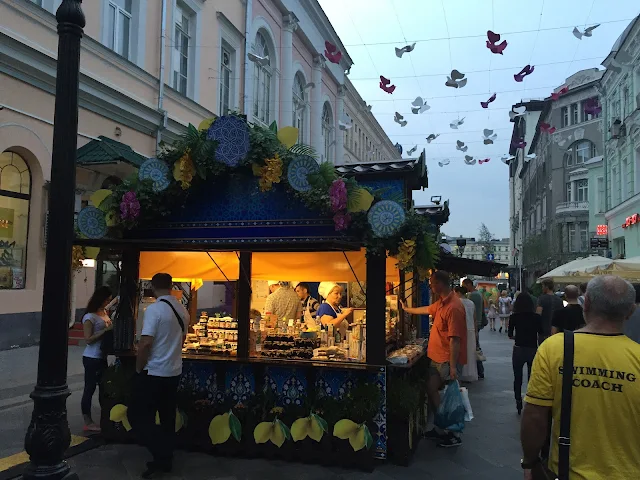





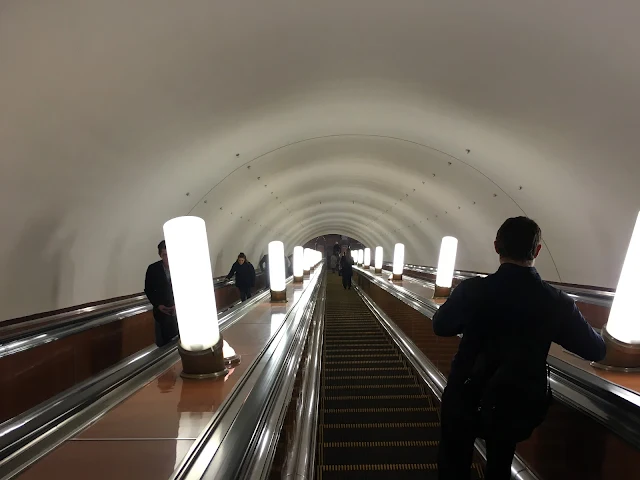


Comments
Post a Comment